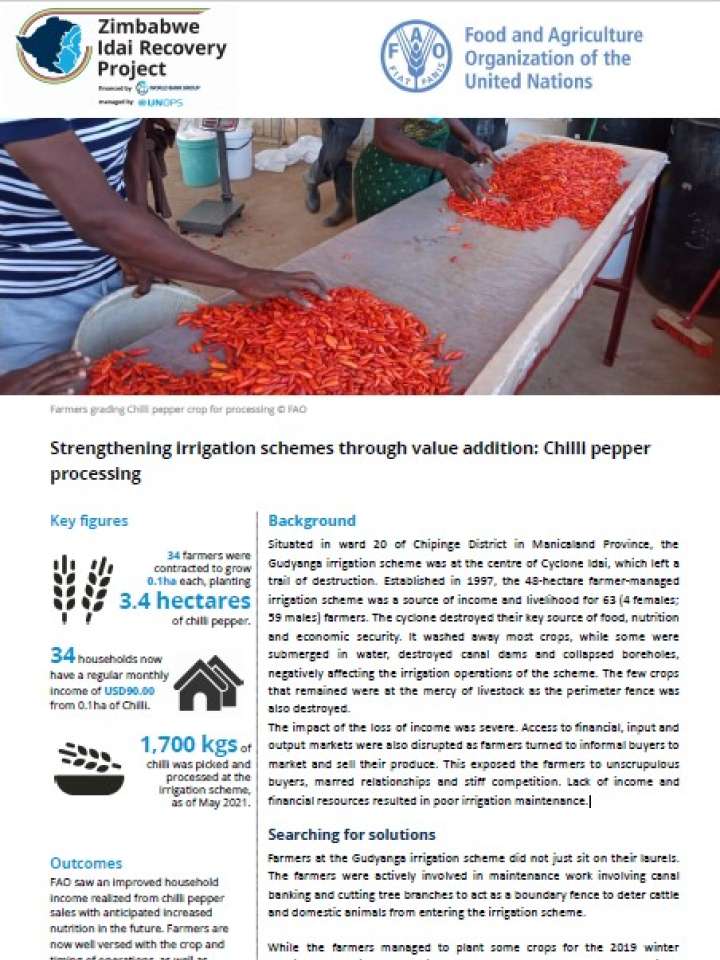Zimbabwe Idai Recovery Project: Strengthening irrigation schemes through value addition
Situated in ward 20 of Chipinge District in Manicaland Province, the Gudyanga irrigation scheme was at the centre of Cyclone Idai, which left a trail of destruction. Established in 1997, the 48-hectare farmer-managed irrigation scheme was a source of income and livelihood for 63 (4 females; 59 males) farmers. The cyclone destroyed their key source of food, nutrition
The impact of the loss of income was severe. This brief outlines efforts to rebuild affected lives and livelihoods, particularly those of the most vulnerable, enhance technical and business capacities in the affected communities, and upgrade irrigation infrastructure.
Explore further
